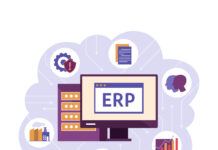Introduction to Enterprise Applications
In today’s fast-paced business landscape, enterprise applications play a critical role in ensuring seamless operations, data management, and business intelligence. These applications are large-scale software solutions designed to integrate various functions and departments within an organization, enabling streamlined workflows and improved efficiency.
Key Characteristics of Enterprise Applications
Enterprise applications are distinguished by several key features:
- Scalability – They are built to handle the increasing demands of a growing business.
- Integration – These applications unify multiple business functions such as finance, HR, supply chain, and customer relationship management (CRM).
- Security – Given the sensitivity of enterprise data, these applications have robust security protocols to prevent breaches.
- Customization – Businesses can tailor enterprise applications to suit their unique needs.
- Real-time Data Processing – Modern enterprise applications enable real-time access to data for better decision-making.
Types of Enterprise Applications
1. Enterprise Resource Planning (ERP) Systems
ERP software integrates core business processes such as accounting, procurement, supply chain, and inventory management. Companies like SAP, Oracle, and Microsoft offer ERP solutions that enable businesses to optimize their operations.
2. Customer Relationship Management (CRM) Systems
A CRM system helps businesses manage customer interactions, track leads, and improve sales efficiency. Leading CRM platforms include Salesforce, HubSpot, and Zoho CRM.
3. Supply Chain Management (SCM) Systems
SCM applications enable businesses to monitor and optimize their supply chain activities, from sourcing raw materials to delivering finished goods. Examples include SAP SCM and Oracle SCM Cloud.
4. Business Intelligence (BI) Applications
BI applications provide analytical tools that help organizations make data-driven decisions. Popular BI tools include Power BI, Tableau, and Google Data Studio.
5. Human Resource Management Systems (HRMS)
HRMS software automates HR functions such as payroll, employee records, recruitment, and performance management. Common HRMS solutions include Workday, ADP, and BambooHR.
6. Enterprise Content Management (ECM) Systems
ECM systems help organizations store, manage, and share digital content efficiently. Examples include Microsoft SharePoint and OpenText ECM.
7. Enterprise Asset Management (EAM) Software
EAM applications are used to manage an organization’s physical assets throughout their lifecycle. IBM Maximo and Infor EAM are popular choices in this category.
Benefits of Enterprise Applications
1. Improved Operational Efficiency
Enterprise applications automate repetitive tasks, reducing manual work and increasing productivity.
2. Enhanced Collaboration
With integrated communication and data-sharing features, enterprise applications foster seamless collaboration between departments.
3. Better Decision-Making
Real-time data analytics empower businesses to make informed decisions based on accurate and up-to-date information.
4. Cost Reduction
By automating processes and improving efficiency, organizations can cut operational costs significantly.
5. Scalability and Flexibility
Enterprise applications grow with the business, allowing companies to expand without facing major system limitations.
Challenges in Implementing Enterprise Applications
1. High Initial Costs
The cost of developing and implementing enterprise applications can be substantial, requiring significant investment.
2. Integration Complexity
Integrating enterprise applications with existing systems can be challenging, requiring thorough planning and expertise.
3. User Adoption
Employees may resist change due to the complexity of new software. Proper training and onboarding are essential for smooth adoption.
4. Security Concerns
Given the volume of sensitive data managed by enterprise applications, businesses must prioritize robust cybersecurity measures.
Future Trends in Enterprise Applications
1. Artificial Intelligence and Machine Learning
AI-powered enterprise applications can automate decision-making, improve customer service, and optimize business processes.
2. Cloud-Based Solutions
With the rise of cloud computing, enterprise applications are increasingly moving to cloud-based platforms, offering better accessibility and scalability.
3. Internet of Things (IoT) Integration
IoT-enabled enterprise applications enhance real-time monitoring and predictive maintenance capabilities, especially in manufacturing and logistics.
4. Low-Code and No-Code Platforms
Businesses are adopting low-code/no-code development tools to create and modify enterprise applications with minimal coding expertise.
Conclusion
Enterprise applications are indispensable for modern businesses, enabling automation, integration, and optimization of core processes. As technology evolves, these applications will continue to transform industries, making businesses more efficient and competitive.












